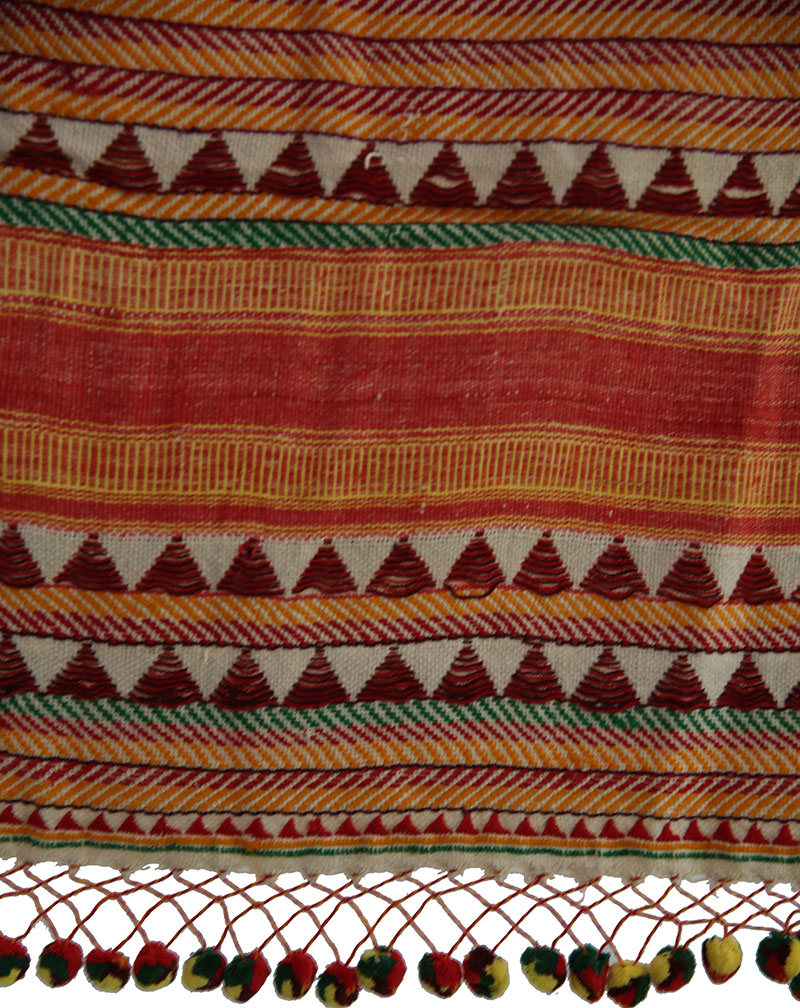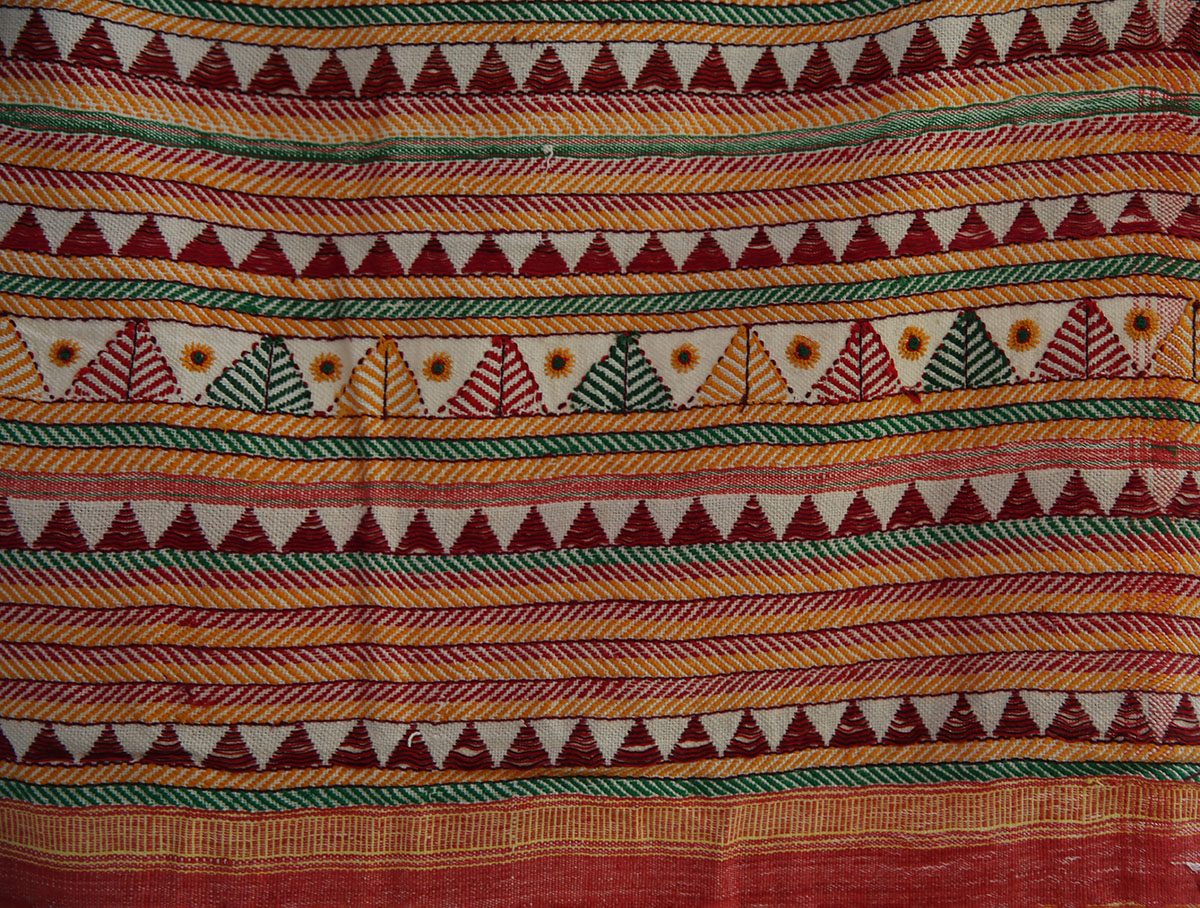ARTICLE
Kapdaganda
However, the making of Kapdaganda is becoming unpopular with the young Dongria Kondh women today due to the shift towards mainstream contemporary trends and the availability of affordable mass-produced clothing. The Odisha state government and organisations such as Dongria Kondh Development Agency (DKDA) have undertaken programs to preserve the Kapdaganda weaving and embroidery tradition since the 1980s, for instance, Ama Parampara Ama Jeevika, a three-month training program for women in Kurli and Munikhol villages. Members of the Dongria Kondh tribe have also expressed concern about the fashion industry’s appropriation of the traditional Kapdaganda design – textile brands and designer labels have been known to create imitations of the Kapdaganda shawls, diverting demand away from the Dongria Kondh artisans who produce these shawls commercially – and are taking measures to curtail this by seeking a Geographical Indication (GI) tag for the shawl.
Bibliography
Our website is currently undergoing maintenance and re-design, due to which we have had to take down some of our bibliographies. While these will be re-published shortly, you can request references for specific articles by writing to hellomapacademy@map-india.org.








